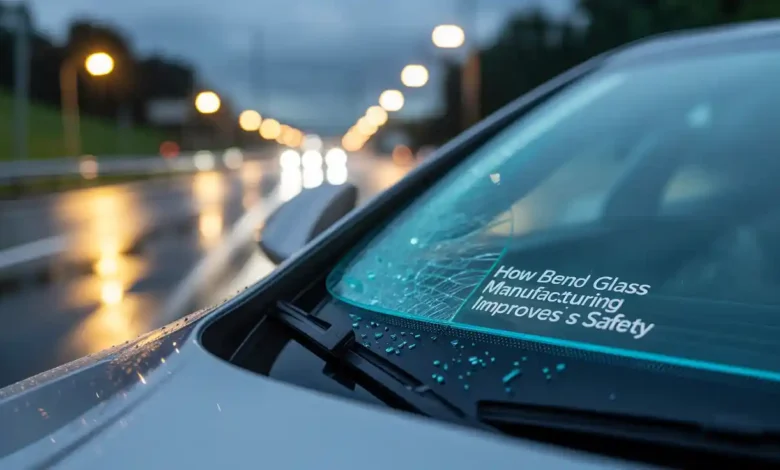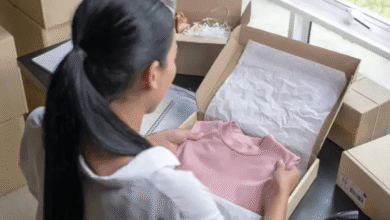How Bend Glass Manufacturing Improves Safety in Modern Vehicles

The integration of curved glass in modern automobiles is more than just a design trend—it plays a vital role in enhancing safety, functionality, and durability. As both bent glass manufacturers and auto glass manufacturers continue to innovate, the automotive industry is reaping the benefits of improved structural integrity, visibility, and occupant protection. This article examines how curved glass enhances vehicular safety, from design precision to impact resistance, and why it’s a cornerstone in modern vehicles.
1. Understanding the Role of Curved Glass in Vehicles
Curved glass in vehicles isn’t simply about aesthetics. The use of specially bent and formed glass enables a better fit within the car’s frame, which is crucial for optimal aerodynamics, visibility, and structural integrity. Unlike flat glass, curved glass provides seamless integration into the vehicle’s body, helping to maintain rigidity while allowing for panoramic views and sleek profiles.
This structural alignment also contributes to the vehicle’s safety. The precision with which the glass is molded ensures minimal gaps and misalignments, which in turn reduces the risk of leaks or pressure points that can weaken the glass under stress or collision.
2. Impact Resistance and Enhanced Durability
Safety glass used in vehicles, typically laminated or tempered, is designed to withstand significant force. When this glass is curved during manufacturing, it gains additional strength due to the physical properties of its shape. A curved surface distributes pressure more evenly compared to flat glass, reducing the likelihood of shattering upon impact.
In the case of an accident, curved laminated windshields prevent shards from flying into the cabin, protecting the driver and passengers. This enhanced durability is especially critical in rollover incidents, where the roof and windshield area endure the most pressure. The structural design of curved glass helps maintain cabin integrity, reducing the risk of collapse.
3. Improved Visibility for Driver Awareness
One of the subtle but important ways curved glass improves safety is through enhanced visibility. The curvature allows windshields and windows to wrap around the vehicle’s body, providing a wider field of view. Drivers benefit from reduced blind spots and better peripheral vision, which is crucial for making safe driving decisions.
Additionally, many modern curved glass installations include anti-glare, UV-blocking, and rain-repellent coatings. These features ensure that drivers have clear visibility in varying weather conditions, thus reducing the chances of accidents caused by poor visibility or glare.
4. Precision Engineering by Curve Glass Manufacturers
Curved glass plays a critical role in ensuring that each piece of automotive glass meets rigorous safety and quality standards. The manufacturing process involves heating the glass to high temperatures and then shaping it over precision molds. Once curved, it is rapidly cooled or laminated depending on its intended use.
This process not only ensures a perfect fit for each vehicle model but also strengthens the glass against external forces. Through careful engineering and quality control, manufacturers can create glass that complements vehicle frames while meeting crash safety regulations.
5. Safety Integration in Smart Glass Technology
Modern vehicles are increasingly integrating smart technologies into their glass components—such as heads-up displays (HUDs), heating elements, and sensors for automatic wipers. The seamless incorporation of these features into curved glass panels supports driver safety without compromising visibility or structure.
Curved glass is ideal for embedding such technologies due to its shape and strength. These features allow drivers to access critical information directly in their line of sight or benefit from automatic adjustments that improve visibility during adverse weather conditions—all of which contribute to safer driving experiences.
6. The Role of Auto Glass Manufacturers in Crash Standards
Auto glass manufacturers are pivotal in developing glass solutions that meet or exceed global crash safety standards. From frontal collisions to side impacts and rollovers, glass components must pass stringent tests to ensure they don’t become hazards during an accident.
Tempered side windows, laminated windshields, and rear glass are engineered not only to resist breakage but also to absorb impact energy. In doing so, they reduce the severity of injuries during a crash. Auto glass manufacturers often work closely with vehicle designers to ensure that glass components align with airbag deployment, structural crumple zones, and passenger restraint systems.
7. Future Trends in Curved Auto Glass Safety
As automotive design continues to evolve, curved glass will play an even more critical role. With the rise of electric and autonomous vehicles, the demand for more expansive glass surfaces, such as full-glass roofs and wraparound windshields, is growing. These changes will require even higher standards of strength, flexibility, and safety compliance.
Both curve and auto glass manufacturers are investing in research and development to produce ultra-strong, lightweight glass that can adapt to these evolving requirements. Innovations like self-healing coatings, adaptive tinting, and improved crash performance are already on the horizon, signaling a future where glass becomes an even more central element in automotive safety.
Frequently Asked Questions (FAQs)
Q1: Why is curved glass preferred over flat glass in modern vehicles?
Curved glass is preferred because it offers several advantages beyond aesthetics. Its shape allows it to better align with a vehicle’s body, improving aerodynamics and visibility. More importantly, the curvature enhances the structural integrity of the glass, making it more resistant to impact. This leads to better occupant protection during collisions or rollovers.
Q2: How does curved glass contribute to accident safety?
Curved glass contributes to accident safety in multiple ways. It distributes stress more evenly across its surface, reducing the chance of shattering. When laminated, it holds together upon impact, preventing sharp shards from injuring passengers. In side windows and rear glass, curved tempered glass breaks into small, dull-edged pieces, minimizing injury risk.
Q3: Is curved glass more expensive to produce than flat glass?
Yes, curved glass typically requires a more complex manufacturing process. It involves heating flat glass to high temperatures, shaping it precisely over molds, and then cooling or laminating it. This adds to production time and cost, but the investment pays off through improved vehicle safety, aesthetics, and performance.
Q4: Do all vehicles use the same type of curved glass?
No, the type of curved glass used can vary by vehicle make and model. Windshields are generally made from laminated curved glass, while side and rear windows often use tempered curved glass. Luxury and high-performance vehicles may also incorporate advanced glass types, such as acoustic or solar-controlled glass, which are also curved to match the vehicle design.
Q5: Are there specific regulations that auto glass manufacturers must follow?
Absolutely. Auto glass manufacturers must adhere to strict national and international safety standards. These include guidelines for impact resistance, light transmission, UV protection, and structural integrity during crashes. These regulations ensure that glass components not only enhance safety but also function reliably in real-world driving conditions.
Q6: Can damaged curved auto glass be repaired, or must it be replaced?
It depends on the type and location of the damage. Minor chips or cracks in windshields may be repairable, especially if they are away from the driver’s line of sight. However, larger cracks or damage to tempered side windows typically require full replacement. Due to the precision involved, repairs or replacements should always be handled by certified technicians.
Q7: What advancements are expected in curved auto glass technology?
Future advancements in curved auto glass include the integration of more smart features, such as adaptive tinting, augmented reality heads-up displays, and embedded sensors. Manufacturers are also exploring stronger and lighter materials to improve crash performance while reducing vehicle weight—an essential factor for electric vehicle efficiency.
Conclusion
The contribution of curved glass to vehicle safety goes far beyond its appearance. It’s a result of advanced engineering, rigorous testing, and a deep understanding of how materials behave under stress. As technology continues to evolve, curved glass will remain a vital component in shaping not only the design but also the safety of tomorrow’s vehicles.



